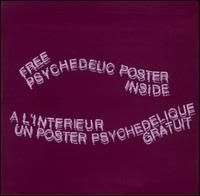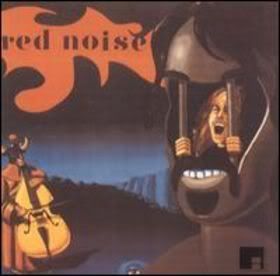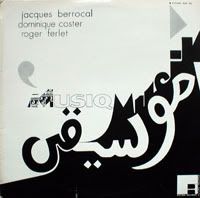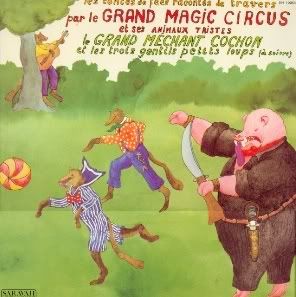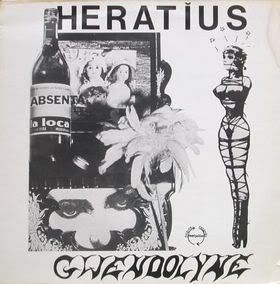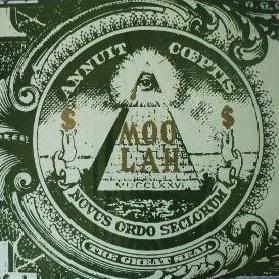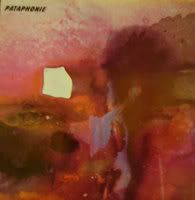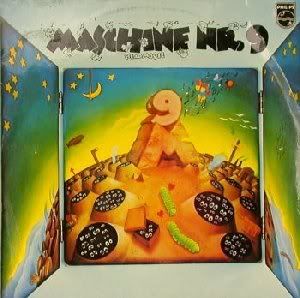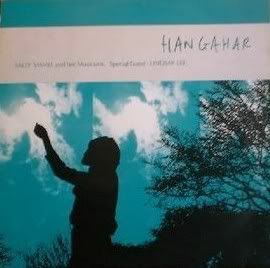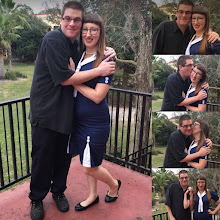
ESP'-Disk, 1969; reissued several times; available
8 tracks, 48:07
Note: Both titles have been used for this album, but not at the same time; earlier CD reissues used the title ORGASM, while the most recent CD issue uses the title CAVE ROCK. I haven't found concrete proof as to what its original name was when it was first released.
ESP'-Disk needs no introduction to most. For readers who don't know of them yet, they were a revolutionary label (still are!) that put out a lot of jazz and avant music in the 60s and 70s. From Patty Waters to Albert Ayler, Sun Ra to the Godz, ESP'-Disk covered a wide variety of amazing music. However, Cromagnon's ORGASM is definitely their weirdest offerring. Very little is known about Cromagnon; Austin Grasmere and Brian Elliot were the masterminds, but that's the only concrete fact. The "Connecticutt Tribe" assists too, and their identity is lost to history.* All Esp'-Disk offers is "There actually was a Connecticut tribe of sorts, although it consisted not of Indians but of their close Anglo friends, with several children included." Various rumors abound about Cromagnon, including that Grasmere and Elliott were former pop songwriters (which has proven to be true), that members went on to form Negativland and the Residents, that there will be a reunion tour..... The music itself needs no such embellishments. Completely out of time, CAVE ROCK/ORGASM sounds every bit that it could have been made tomorrow rather than nearly forty years ago. "Caledonia", the most famous track (and popular song to cover!), begins with fanfares over the radio, static included. It slowly builds into a mindblowing mix of bagpipes, fuzz guitar, and martial percussion, Bands like Der Blutharsch and Death In June would kill to sound like this, and the fact that such music existed in the 60s is almost unbelievable. The rest of the album is equally as mindblowing. "Ritual Feast Of The Libido" features the sounds of crackling fire, pounded tribal percussion (think slow ritual tribal rather than frenzied), and the grunts of primitive man. "Toth, Scribe 1" is a nearly eleven minute trudge that appears to be "Caledonia" slowed down drastically (in fact, that's precisely what it is). It's a frighteningly sludgy piece, possibly the first drone-doom track (that IS a stretch, but hear it and decide for yourself). Reminiscent of Neu!'s later experiments with speed manipulation, it's a definite high mark. "Genitalia" has melodious chanting and awful vocal squawks, but is too short to be annoying. The remaining tracks feature everything from incredible sound collages to distorted soloing to weird ritual chanting, with no two tracks sounding like the same band. As a whole, it doesn't sound like anything else being made at the time, or really anything else period. CAVE ROCK/ORGASM is a truly unique album, and belongs in every serious avant-rock fan's collection.
UPDATE! As of June 2009, this is back in print from ESP'-Disk! The cover is unfortunately in black and white, but it comes in a nice Digipak and has never sounded better! Get it!
*FURTHER UPDATE: Please visit this link if you want to know the story behind who was in "The Connecticutt Tribe". Long story short, it turns out Cromagnon developed out of the little-known Boss Blues. The members were Peter Bennett, Sal Salgado, Vinnie Howley, Mark Payuk, and Jimmy Bennett. The interview with the surviving members (Bennett, Salgado, Howley, and long-time friend Nelle Tresselt) is available here, courtesy ESP'-Disk: http://lounge.espdisk.com/archives/338
(Grasmere couldn't be located; Elliot, Payuk, and Jimmy Bennett are sadly departed).
